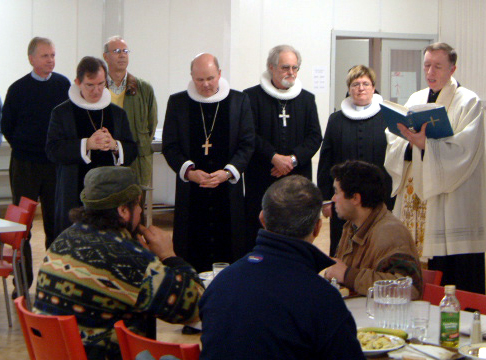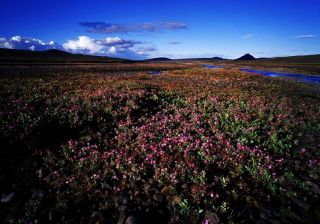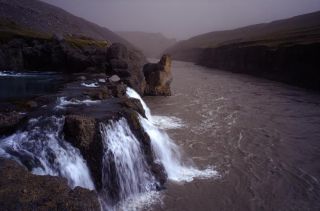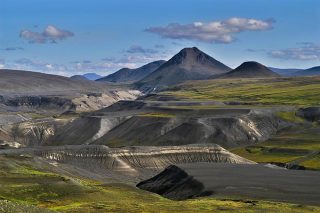'WWF'
Tag Archive
Sep 17 2008
ALCOA, Australia, Greenwash, WWF
Olga Galacho, The Herald Sun, Victoria, Australia– Aluminium titan Alcoa may pump more carbon into the state’s lungs than most companies. But it would have Victorians believe they can start breathing easy again after yesterday’s announcement that it has been recognised as a sustainability leader in its home country, the United States. The opening of its first new smelter in 20 years, in Iceland and powered by hydro-electricity, has cemented Alcoa’s position in the Dow Jones Sustainability Index, it seems.
The index tracks the financial prowess of “leading sustainability-driven” companies, and this year is the seventh in a row that the highly energy-intensive Alcoa has been included.
The news might be a relief to those who were considering investing in portable oxygen tanks after the Worldwide Fund for Nature (WWF) last week named and shamed Alcoa as one of 11 power generation owners doing “zero to reduce their emissions”. Read More
Mar 17 2007
ALCOA, Amazon, Cultural, Ecology, Economics, Laws, Repression, WWF
Brazilian environmental activists are charging that Brazilian environmental authorities and an Alcoa lead consortium planning construction of Barra Grande dam conspired to commit fraud in the awarding of an environmental license for the project. Members of Brazil’s Movement of Dam-Affected People (MAB) and environmentalists blockaded the access road to a stand of virgin forest slated for clearing before the filling of the reservoir. In all, 6,000 hectares of primary forests, including araucaria pines, in one of the richest remaining expanses of the threatened Atlantic Coast rainforest, would be flooded by the dam on the Pelotas river in Southern Brazil. A 2,000 hectare stand of virgin araucaria forests was somehow “omitted” in the project’s environmental studies. Local groups have filed a lawsuit asking a federal court to annul the license awarded to Barra Grande, to require the consortium to carry out new studies evaluating the possibility of operating the reservoir at a lower level to avoid drowning the araucaria forests, and if this is deemed impossible, to order the demolition of the dam structure. Heavily-armed riot police have reportedly been sent to the area to disperse protestors. The consortium building Barra Grande includes the Pittsburgh-based Alcoa aluminum company (which contains Kathy Fuller, President of WWF-USA as a Board Member), MAB leader Soli da Silva says the mobilization will continue indefinitely. “We cannot permit that fraud and a ‘done deal’ become the rule on environmental licensing for hydroelectric projects in our country.” Please support these brave environmentalists at http://forests.org/action/brazil/ .
Read More
Mar 17 2006
3 Comments
Actions, ALCOA, Climate Change, Ecology, Greenpeace, Greenwash, Kárahnjúkar, Pollution, Repression, WWF
By Merrick
The Icelandic government is planning to destroy the largest remaining intact wilderness in Europe by building the Kárahnjúkar dam. It will be the largest dam of its kind in Europe, creating a reservoir of around 60 sq km. It’s not just that the submerged land will be obliterated, but the land beyond the dam will be deprived of water.
The area is land of huge ecological significance, designated an environmentally protected area, the oldest surviving areas of Iceland’s original vegetation. Around 380 square miles will be directly affected, with adjacent rivers, land and sea secondarily impacted.
To give you some context, it’s a reservoir roughly the size of Oxford with devastating direct impact on a surrounding delicate unspoilt ecosystem the size of Greater London. Read More
Oct 14 2005
ALCOA, Amazon, Australia, India, Landsvirkjun, Surinam, WWF
NACIÓN CONDENADA
“Con un coste de más de 1 billón de dólares, el
proyecto de la presa hidroeléctrica de Karahnjukar en Islandia, es un proyecto enormemente controvertido.”
(Mark Lynas/The Ecologist v.33, n.10, 1. Enero 2004)
Mark Lynas viajó hasta el meollo de la cuestión,
esperando descubrir por sí mismo la verdadera cara de este monstruo industrial.
“Sólo llevaba tres días en Islandia y todo iba mal. Estaba allí para investigar el gigantesco proyecto de la fundición de aluminio de Karahnjúkar, una enorme presa hidroeléctrica que está actualmente siendo construida en un lugar remoto de las tierras altas del este. Muy polémico durante el periodo de planificación, Karahnjúkar desencadenó manifestaciones nacionales, campañas internacionales de envío de e-mails y faxes e incluso una huelga de hambre llevada a cabo por la madre de la cantante Björk. Ya había visto otros proyectos de presas destrozar paisajes naturales y sociedades humanas en sitios como India y Brasil.Para mí era bastante claro que las grandes presas son generalmente algo nefasto. Aun así, me encontré sentado en la oficina de Mr Thorsteinn Hilmarsson, agente de prensa de la compañía eléctrica nacional Landsvirkjun, que me estaba convenciendo de que Karahnjukar era, en realidad, beneficioso. Read More
Aug 29 2005
ALCOA, Barclays, Climate Change, Corruption, Ecology, Greenpeace, Greenwash, Impregilo, India, Kárahnjúkar, Landsvirkjun, Langisjór, Pollution, Repression, Saving Iceland, Skagafjörður, Skjálfandafljót, WWF, Þjórsárver
With the growing awareness of climate change, carbon emission restrictions may not be too far off. Because countries that pollute the most may well get the heaviest restrictions, rather than seeking to reduce their emissions many industrial corporations are looking to move operations abroad.
Iceland, despite modern European levels of education, welfare and wealth, has almost no heavy industry. Their carbon rations will be up for grabs. Seeing the extra pollution coming, in 2001 Iceland got a 10% increase on the CO2 limits imposed by the Kyoto treaty. The problem is that the lack of heavy industry means a lack of the major power supply needed for such things. But Iceland has glacial rivers in vast areas unpopulated by humans; land for hydroelectric dams that can be seen as carbon-neutral. Read More
Apr 13 2005
ALCOA, Bechtel, Century Aluminum, Democracy deficit, Ecology, Greenwash, Impregilo, Kárahnjúkar, Landsvirkjun, Media bias, Ólafur Páll Sigurdsson, Pollution, Repression, Saving Iceland, WWF
CorporateWatch.org
Newsletter Issue 23 April/May 2005
In March 2004, the government of Iceland held a conference in the capital Reykjavik. It was a private conference, attended by representatives of the top multinational corporations, Rio Tinto, Alcoa and Alcan among them, and the population were not told about it in advance. Iceland, a government spokesman informed its people afterwards, was now open for business. Read More
Jan 26 2005
Actions, ALCOA, Amazon, Australia, Bechtel, Ecology, India, Kárahnjúkar, Landsvirkjun, Laws, Malaysia, Ólafur Páll Sigurdsson, Pollution, Saving Iceland, Surinam, WWF
Sauðárfossar – Amongst numerous waterfalls destroyed by the Kárahnjúkar dams
Corporate Watch
“Nobody can afford to allow the divine Icelandic dragon of flowers and ice to be devastated by corporate greed”
People in Iceland are calling for an international protest against the building of a series of giant dams, currently under construction in the eastern highlands of Iceland. The dams are designated solely to generate energy for a massive aluminium smelter, which will be run by the US aluminium corporation Alcoa and built by Bechtel.Not a single kilowatt of energy produced by the dams will go for domestic use. Alcoa is seizing the chance to relocate to Iceland after costs of producing aluminium in the US soared. Read More
Jan 01 2004
ALCOA, Amazon, Australia, Climate Change, Ecology, Economics, Impregilo, India, Kárahnjúkar, Landsvirkjun, Laws, Pollution, Repression, Surinam, WWF
‘Damned Nation’ is very good on the spiel behind the Karahnjukar project and Alcoa.
The Ecologist
v.33, n.10, 1. Jan 2004
Costing over $1 billion, the Karahnjukar hydroelectric dam in Iceland is a hugely controversial project. Mark Lynas journeyed to the blasting face, hoping to work out for himself whether this industrial elephant is green or brilliant-white.
 Reassurances in the Impregilo work camp canteen Read More
Reassurances in the Impregilo work camp canteen Read More
Nov 29 2003
8 Comments
ALCOA, Barclays, Bechtel, Corruption, Dams, Democracy deficit, Ecology, Economics, Greenwash, Guðmundur Páll Ólafsson, Impregilo, Kárahnjúkar, Landsvirkjun, Laws, Ólafur Páll Sigurdsson, Pollution, Repression, WWF
The Guardian, November 29, 2003
‘Power Driven’ appeared in The Guardian Weekend in 2003 and made a major impact in Iceland. It is still the best main stream analysis of many key issues at stake and an excellent overview of the social background.
In Iceland, work has already begun on a colossal $1bn dam which, when it opens in 2007, will cover a highland wilderness – and all to drive one US smelter. Environmentalists are furious, but the government appears determined to push through the project, whatever the cost. Susan DeMuth investigates.
North of Vatnajokull, Europe’s biggest glacier, lies Iceland’s most fascinating and varied volcanic landscape. Ice and boiling geothermal infernos meet at the edges of the glacier, and then the largest remaining pristine wilderness in western Europe begins – a vast panorama of wild rivers, waterfalls, brooding mountains and mossy highlands thick with flowers. Read More
Feb 19 2003
ALCOA, Corruption, Dams, Ecology, Greenland, India, Kárahnjúkar, Pollution, WWF
Mines and Communities
London Calling!
February 19 2003
THE “WOOF” AND ITS WEB-FOOTED FRIENDS
Birds have a habit of coming home to roost. None more so than the rare pink-footed geese, who winter in Britain and nest and feed at Karahnjukar in Iceland every year. Whether dodgy deals by conservationists also come home to roost is open to question.
However, the world’s biggest public-subscription conservation organisation now faces what might (just) be its biggest controversy yet. The World Wide Fund for Nature (WWF, or”WOOF” as its fondly known) seems split down the middle over a new sponsorship deal. Read More


